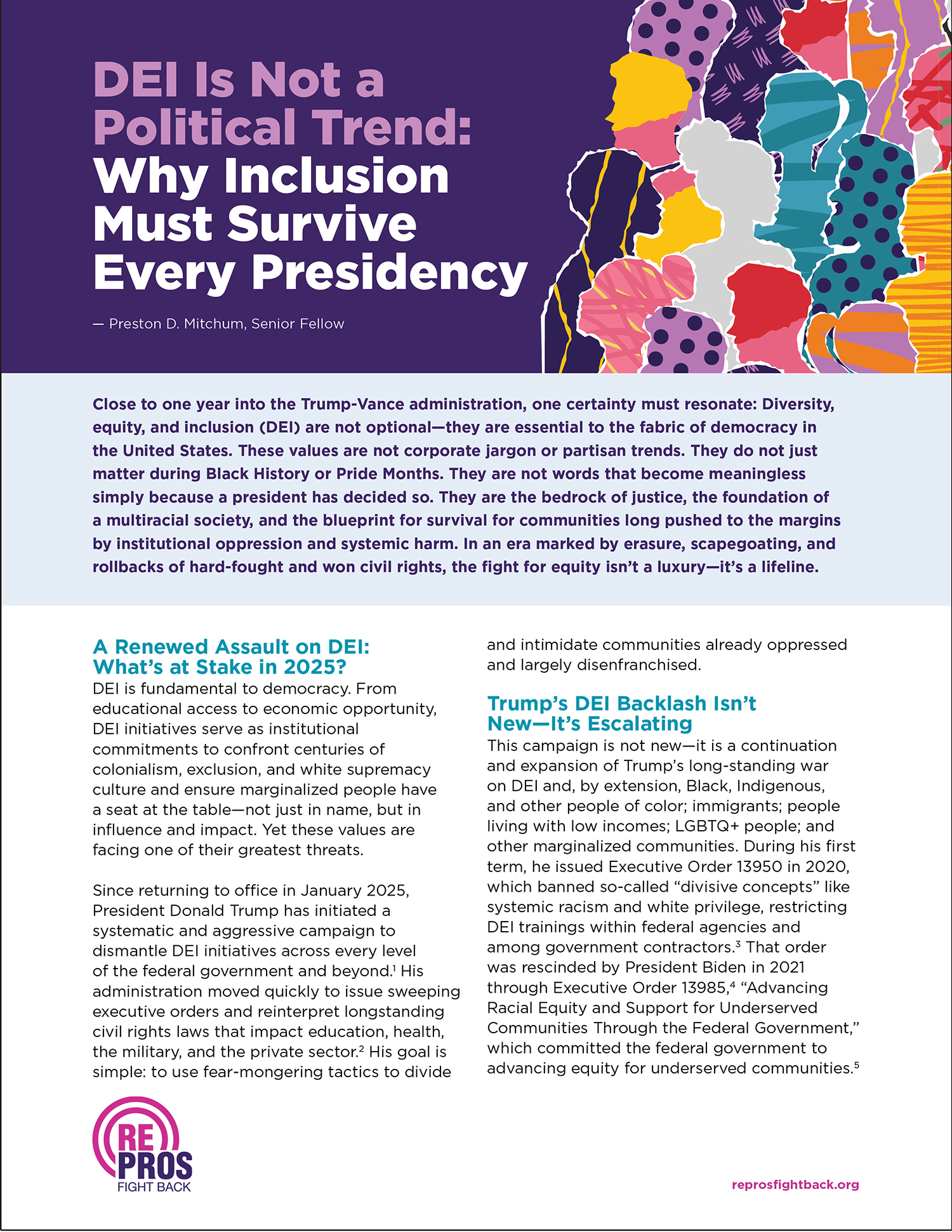
DEI Is Not a Political Trend: Why Inclusion Must Survive Every Presidency
Close to one year into the Trump-Vance administration, one certainty must resonate: Diversity, equity, and inclusion (DEI) are not optional—they are essential to the fabric of democracy in the United States. In an era marked by erasure, scapegoating, and rollbacks of hard-fought and won civil rights, the fight for equity isn’t a luxury—it’s a lifeline. … Read More »
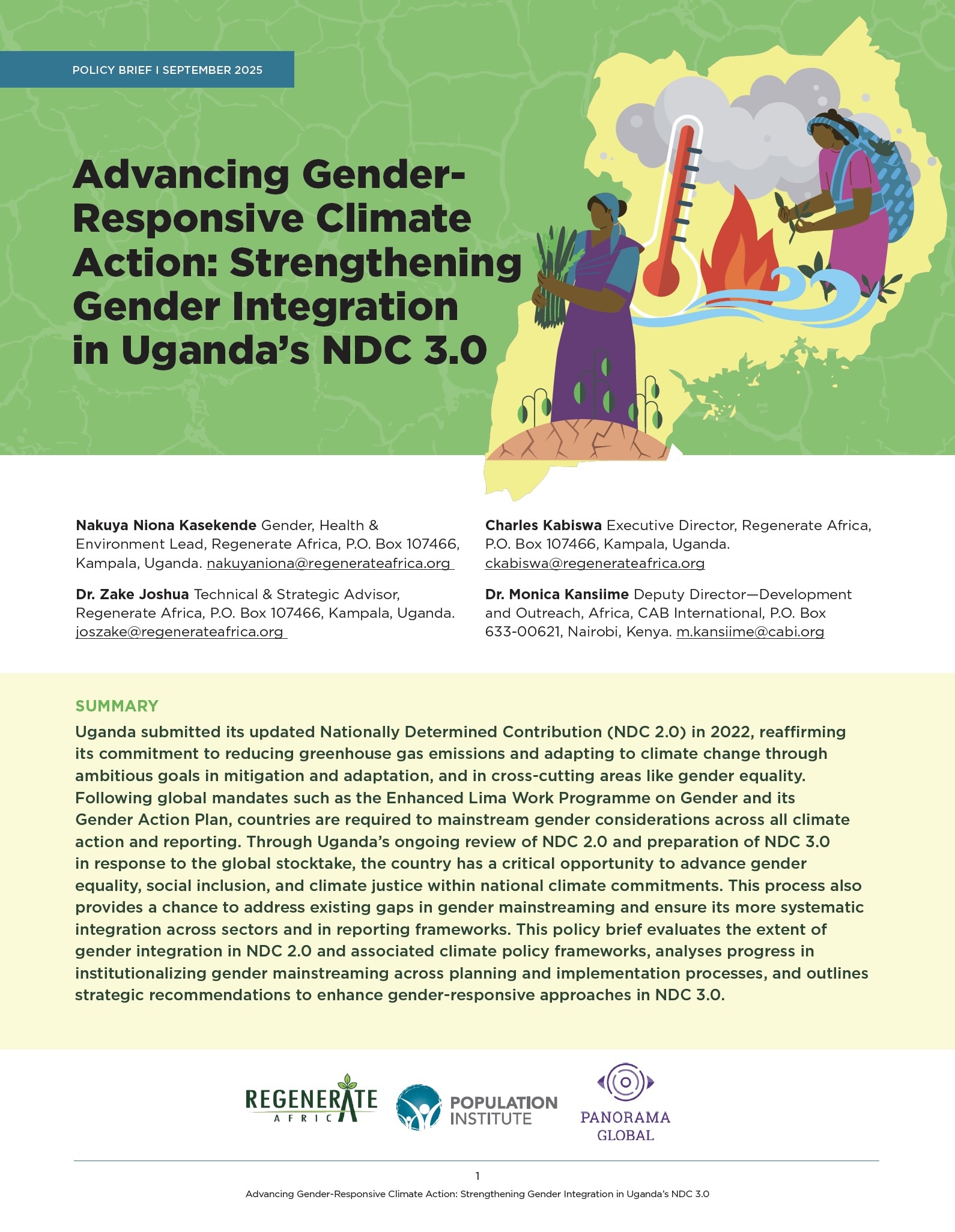
Advancing Gender-Responsive Climate Action: Strengthening Gender Integration in Uganda’s NDC 3.0
Uganda’s updated climate commitments present a crucial opportunity to move from gender awareness to gender-transformative action. Regenerate Africa’s new policy brief, created in collaboration with the Population Institute and Panorama Global, examines how Uganda’s Updated NDC (NDC 2.0) recognizes gender as a cross-cutting issue but stops short of operationalizing measurable gender objectives, clear financing lines, … Read More »
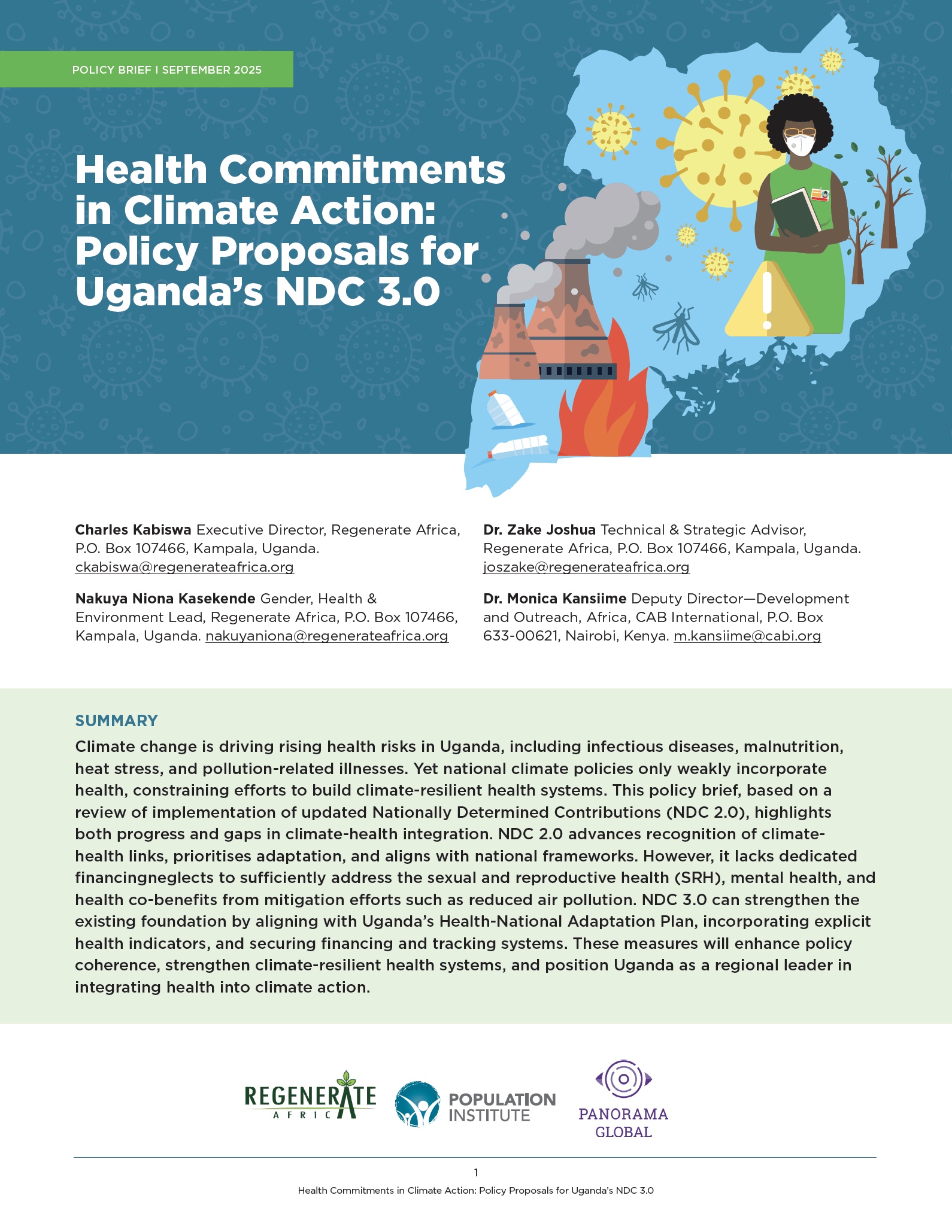
Health Commitments in Climate Action: Policy Proposals for Uganda’s NDC 3.0
Regenerate Africa’s new policy brief, created in collaboration with the Population Institute and Panorama Global, reviews Uganda’s Updated Nationally Determined Contributions (NDC 2.0) and highlights both the progress made and the gaps that remain in linking health and climate action. While NDC 2.0 recognizes climate–health connections, it falls short on dedicated financing, monitoring frameworks, and explicit strategies … Read More »
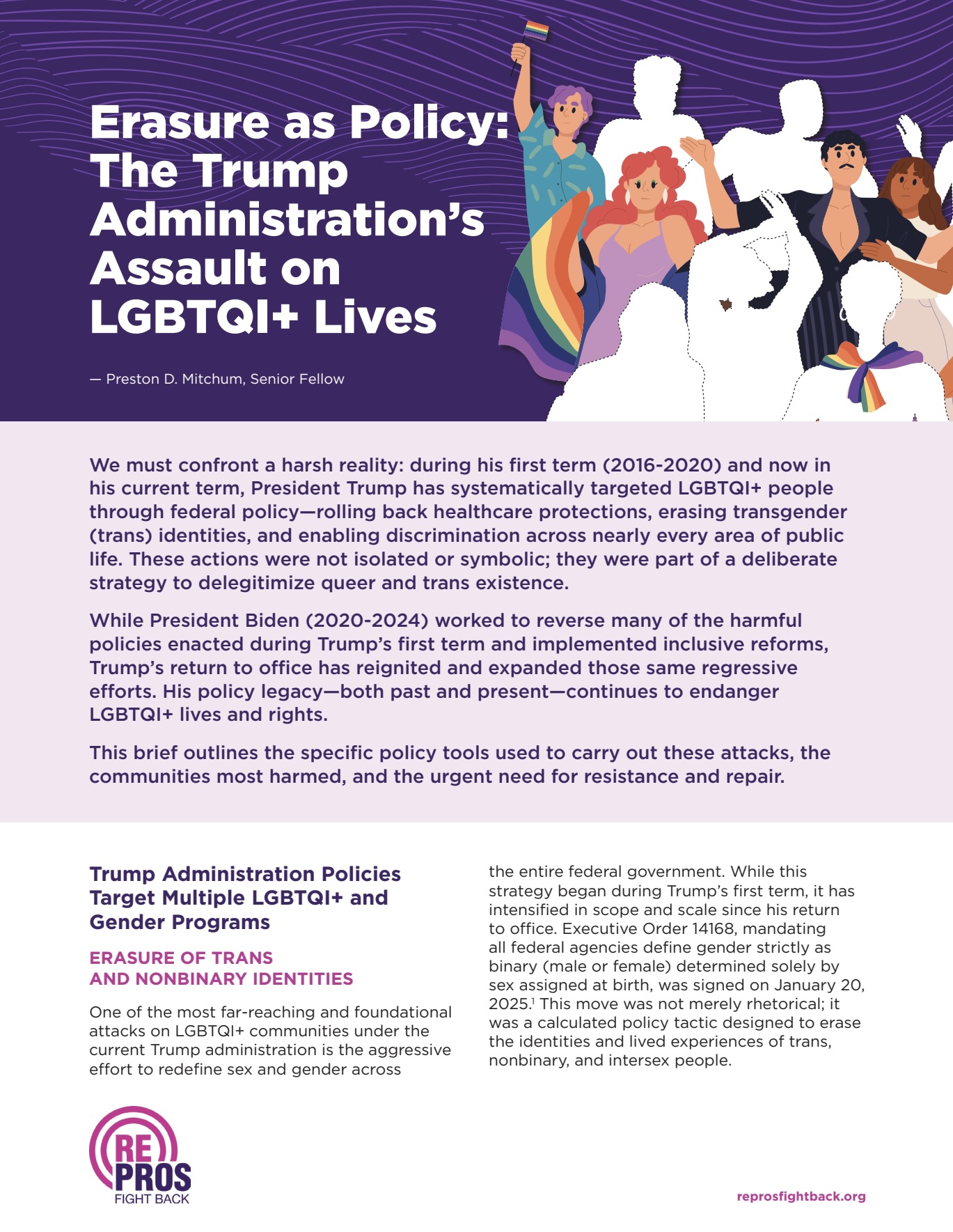
Erasure as Policy: The Trump Administration’s Assault on LGBTQI+ Lives
During his first term (2016-2020) and now in his current term, President Trump has systematically targeted LGBTQI+ people through federal policy—rolling back healthcare protections, erasing transgender (trans) identities, and enabling discrimination across nearly every area of public life. These actions were not isolated or symbolic; they were part of a deliberate strategy to delegitimize queer … Read More »
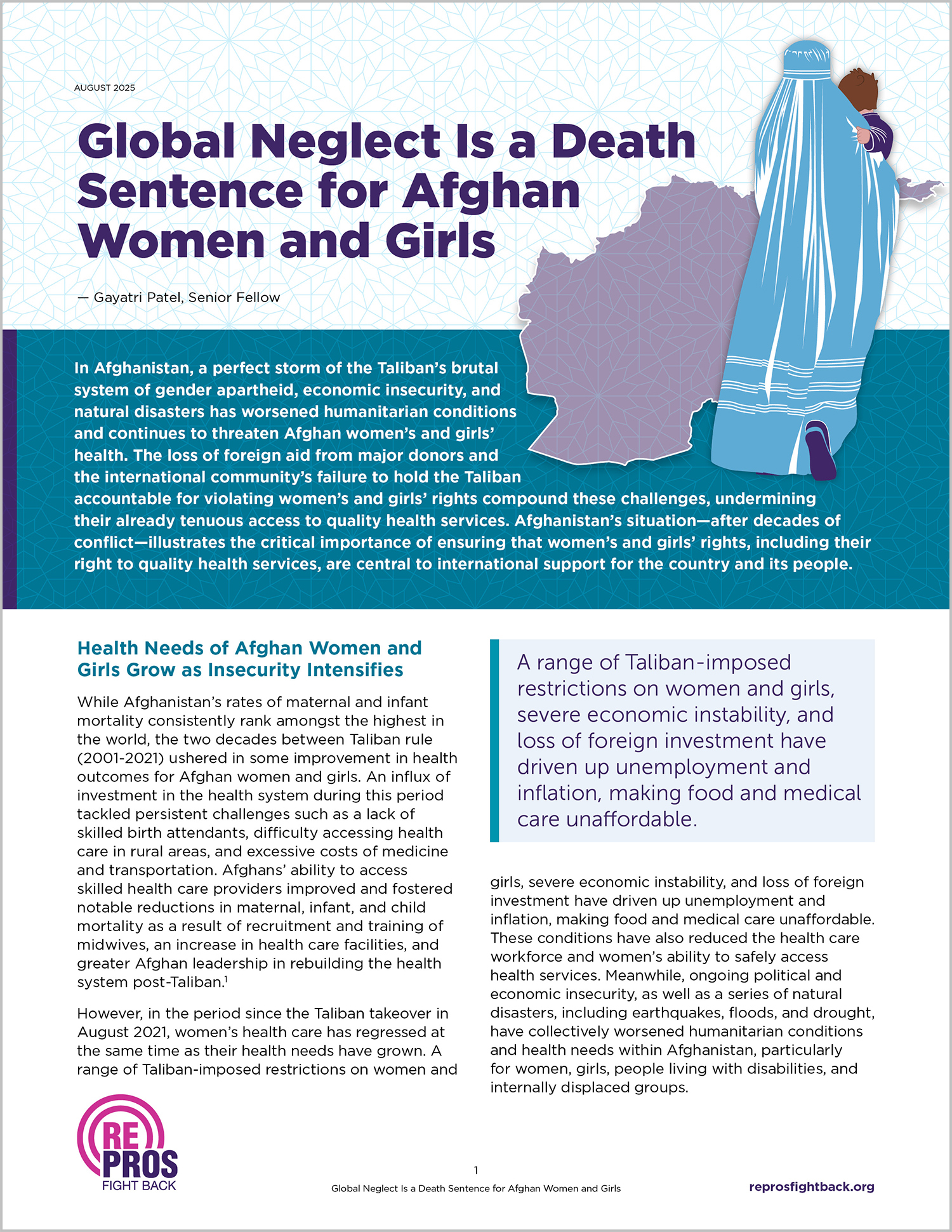
Global Neglect Is a Death Sentence for Afghan Women and Girls
In Afghanistan, the Taliban’s brutal system of gender apartheid, economic insecurity, and natural disasters has worsened humanitarian conditions and continues to threaten Afghan women’s and girls’ health. After decades of conflict, Afghanistan’s situation illustrates the critical importance of ensuring that women’s and girls’ rights, including their right to quality health services, are central to international … Read More »
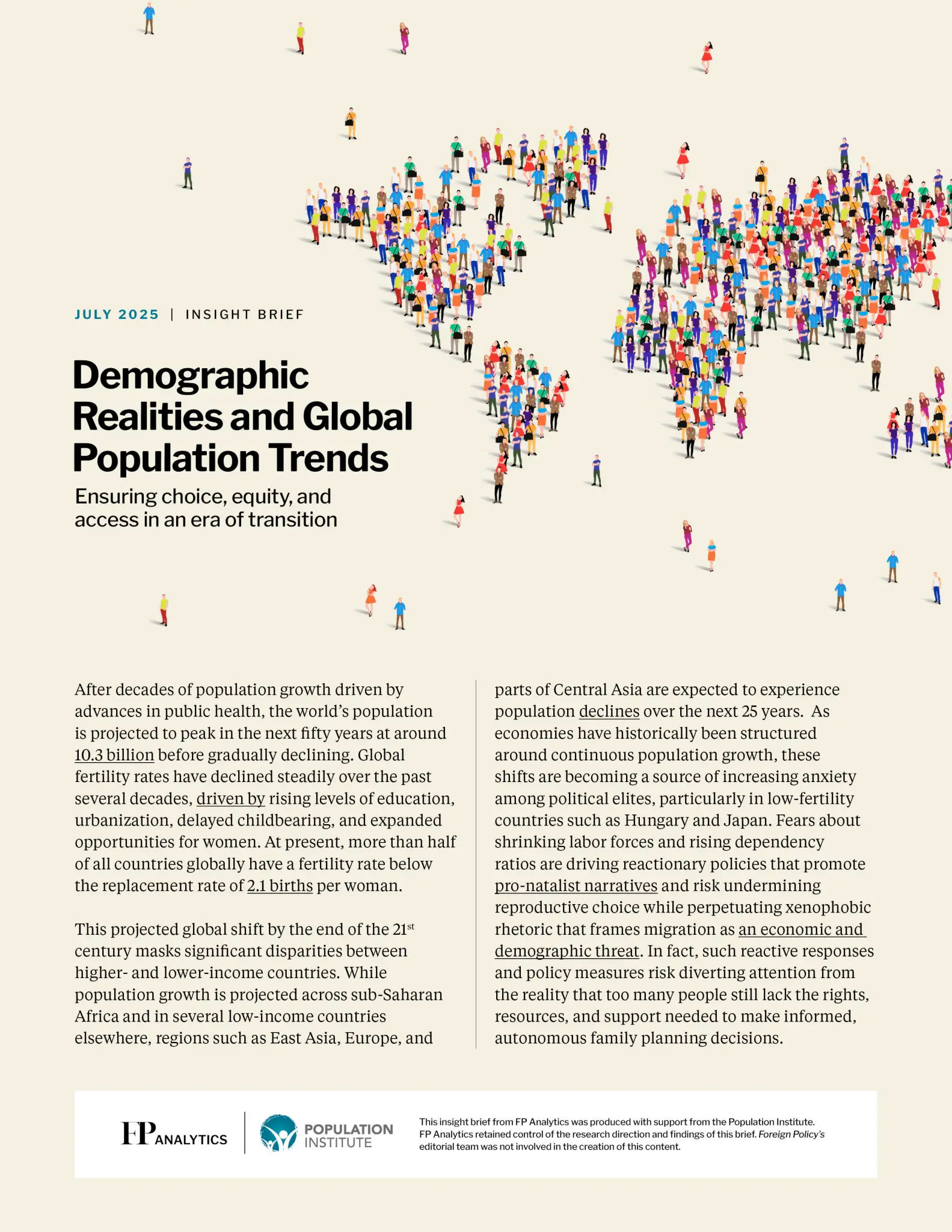
Demographic Realities and Global Population Trends: Ensuring Choice, Equity, and Access in an Era of Transition
Understanding global population trends is key to evidence-based decision making on a range of policies that affect women and girls. We live in a demographically diverse world, with populations in some countries young on average and growing rapidly, while those of other countries are older and growing more slowly. The populations of many countries have … Read More »
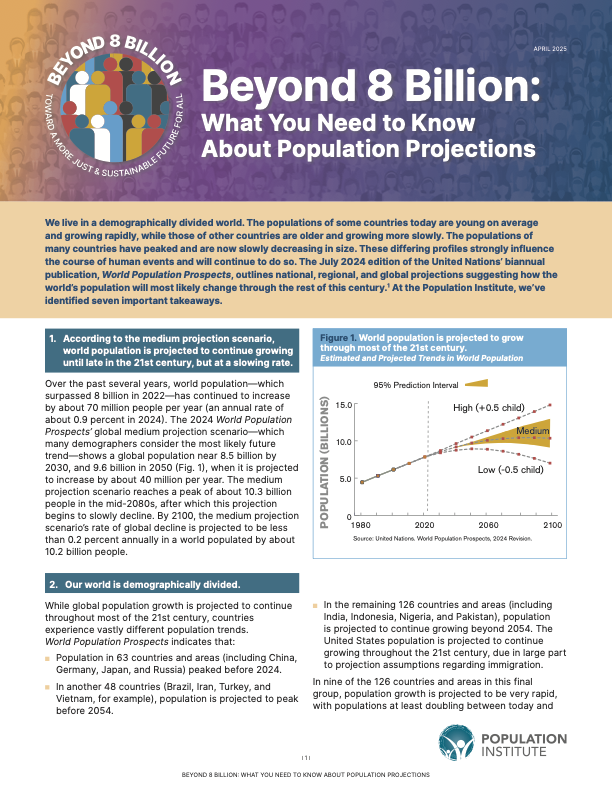
Beyond 8 Billion: What You Need to Know About Population Projections
We live in a demographically divided world. The populations of some countries today are young on average and growing rapidly, while those of other countries are older and growing more slowly. The populations of many countries have peaked and are now slowly decreasing in size. These differing profiles strongly influence the course of human events … Read More »
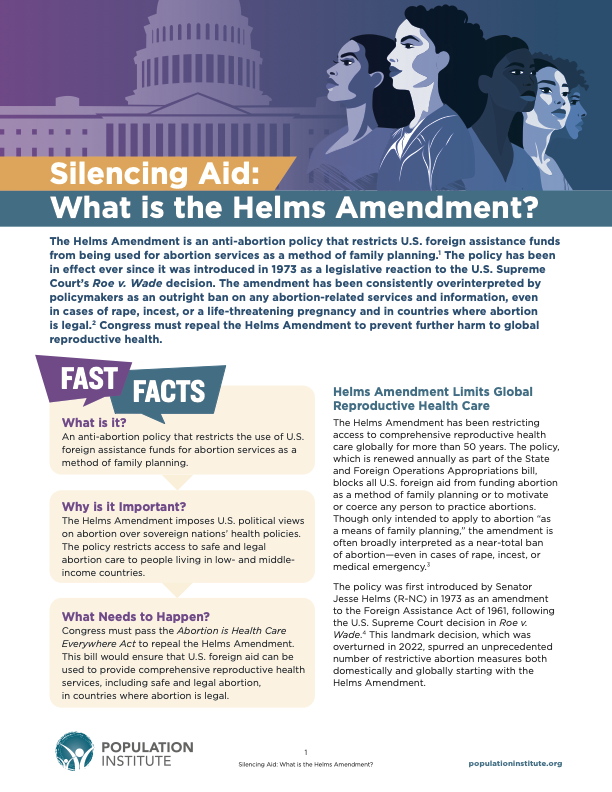
Silencing Aid, Denying Services
As the world’s leading global health donor, the United States has pledged to provide equitable, accessible reproductive health care worldwide. However, two major policies often interfere with and disrupt these essential health care services: the “global gag rule” and the Helms Amendment. These policies have devastating impacts on safe abortion access and other health services … Read More »

Sexual and Reproductive and Health in Emergencies
Conflicts, disasters, climate change, and health emergencies are causing unprecedented levels of humanitarian need around the world. Women and girls are uniquely impacted – on top of violence, displacement, and the loss of livelihoods and social safety nets, they often face disruptions in their access to sexual and reproductive health (SRH) services and a heightened … Read More »
World Population
The subject of population touches upon a wide variety of human interests from reproductive rights to economic development to a sustainable world. For a quick overview, see Why Population Matters. Every two years, the UN’s Population Division publishes its “World Population Prospects” report: Click here for a summary of the latest findings and trends. … Read More »